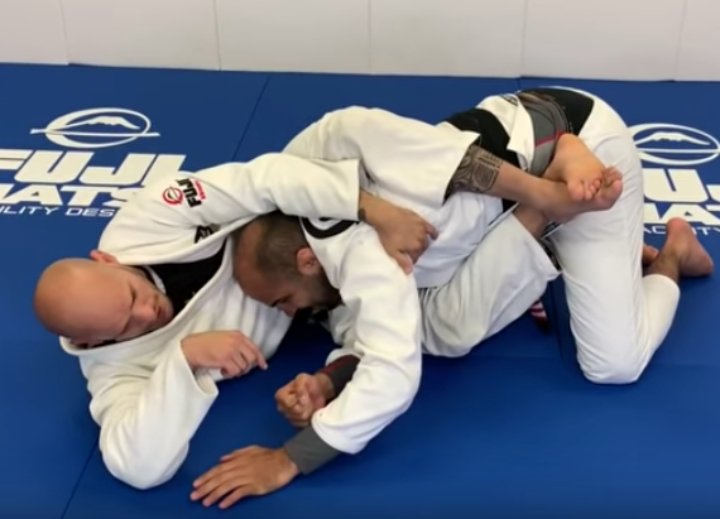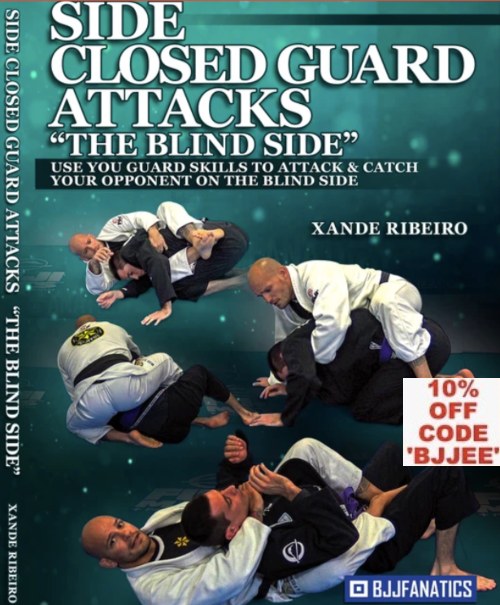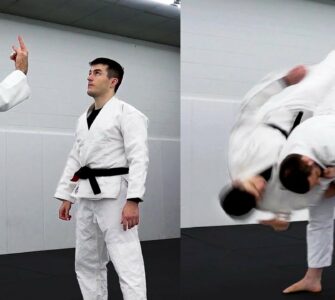In the previous article of our Weekly White Belt Advice Series we have covered closed guard sweeps, so it makes sense to take a good look into high percentage back takes from closed guard in this one. Sweeps and back takes tie well together in their attack-oriented nature, as you’ll see in some technique examples below – so, if you haven’t already read the piece on sweeps, be sure to do so, as being good at sweeping your opponents will also heighten your submission rates tremendously.
The Most Important Thing To Do When You Have a Closed Guard
Before we get to the actual techniques, let’s remind ourselves of the most important thing you need to do when you have someone in your closed guard: attack at all times.
Many jiujiteiros make a mistake of holding a closed guard for a longer period of time without doing anything. And, while simply holding your opponent in it and waiting for the right moment is sometimes a good thing to do, it is never a good approach to use the closed guard as a position of rest for yourself.
Remember: Brazilian Jiu Jitsu is a martial art, and in its essence lies the possibility of dominating and submitting your opponents through applying beautiful techniques, with a wide variety of colors to them. So you need to move towards that essence whenever you can – strive to be an offensive practitioner, not a defensive one. Never let your opponent rest. Make them uncomfortable and have them to always be on a lookout for what is coming next.
The Icing on the Cake – It’s The Back Take
Sure – the back take is not really a submission. But it needs to be mentioned, as closed guard gives you an opportunity to transition onto your opponent’s back, which is the most dominant position in Jiu Jitsu: it is the best position for you to land your attacks, and the worst position for them to successfully defend in.
We’ll learn about the actual back submissions in the upcoming series of articles, but for now just keep in mind that going onto the back is the most favorable position for you to be in.
You’ll be taking your opponent’s back when their posture is broken down. Also, in most cases, taking their back from closed guard involves an arm trap and an arm drag.
We’ll take a look at two back takes from closed guard, one performed in the Gi and the other one in No Gi.
Back Take from Closed Guard (Gi)
This is a back take you can do when you are in a Gi, demonstrated by the legendary Roger Gracie. Take notes on how he controls his training partner’s lapel at all times.
Points:
–>Watch how Roger Gracie deals with the training partner’s grip and pulls their arm towards his head, and then towards his chest.
–>Notice how he breaks the partner’s guard by bringing his legs to his chest.
–>Observe how he opens the guard in order to scoot with the hips to the side, in order to gain a more favorable position; and how he then closes the guard yet again.
–>Watch how he takes the training partner’s lapel with one arm and feeds it to the one, grabbing it across the partner’s back in order to control him.
–>Notice how he positions himself a bit more with his hips and then posts on his elbow.
–>Pay attention to how he’s always pulling on the lapel across the opponent’s back, and then uses that pulling motion – together with the pushing motion of his leg into the partner’s hip – in order to take the back and then putting the hooks in.
Back Take from Closed Guard (No Gi)
In this video by Gordon Ryan, you have an opportunity to learn how to take the back when you are in a No Gi match. Let’s see how to do so.
Points:
–>Observe the way Gordon goes for an arm drag: notice how he controls the training partner’s wrist with one hand and goes behind that same arm; grabbing it higher, behind her armpit.
–>Notice how he then pushes the partner’s wrist into her body, while pulling her arm across the center line of his torso at the same time.
–>Observe that he is aiding this process by pulling with his legs, in order to break his training partner’s posture.
–>Notice that his pulling arm’s elbow goes higher.
–>Observe how he keeps his grip behind the arm he’s pulled.
–>Watch how he reaches across the back with his other hand and how he grabs the partner’s lats to keep her posture down and his position secured.
–>Notice that he opens the guard in order to use his leg to pendulum up – and how he brings his elbow in, in order to trap the partner’s arm.
–>Make sure that your chest is pointing towards your partner at this stage, not towards the ceiling.
–>Watch how he rotates himself into his training partner when going to their back, shifting the knees in the process.
—
Try to use and practice these pointers and techniques in the following period. Remember: practice makes perfect, and if you give yourself enough freedom to fail – you will succeed faster than you’ve ever thought possible!
In the next article, we shall take a look at what to do if you find yourself in someone else’s closed guard!
Use your guard skills to attack and catch your opponent on the blind side.
- World black belt absolute champion Xande Ribeiro shows you the closed guard system that made his guard one of the best
- The side closed guard is a closed guard variation that gives you a dominant angle to attack from off your back.

















